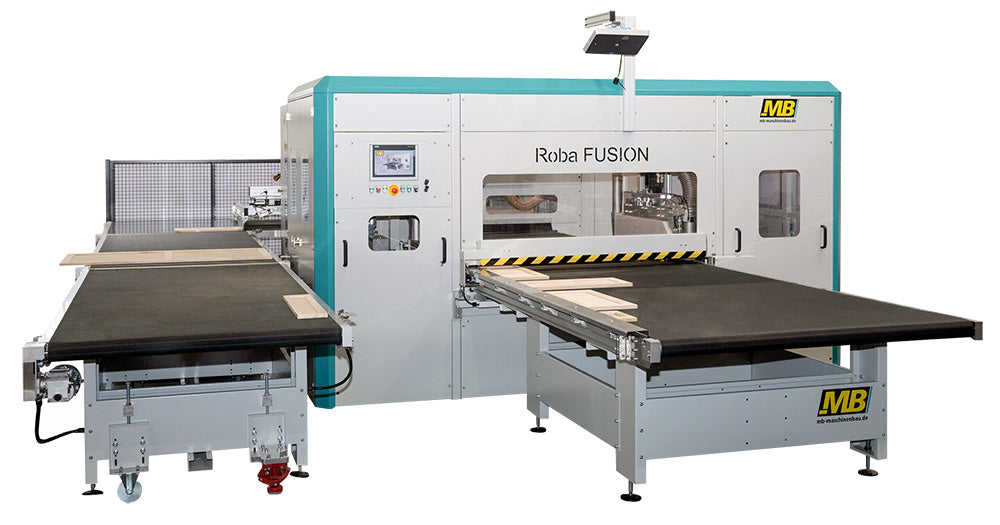MB ROBA Fusion
MB ROBA Fusion is backordered and will ship as soon as it is back in stock.
The double-sided edge shaping machine ROBA Fusion has been developed for the milling of edges of furniture and interior doors.
Advantages
• Only existing “lot-size-one" high volume double end tenoner solution
• Production with minimal tolerances in terms of external dimensions and angularity
• Servo controlled and dynamic axis movements for high part throughput
• Highest shaping quality for door edges and panels
• Processing of lots by automatic laser measurement, Job List, Barcode or RFID
• Flexible configuration with extremely small footprint
Working Procedure
Modern “lot-size-one" production puts high demands on production planning and technical equipment. Part of this is the formatting and edge shaping of cabinet and interior doors. This is usually done by double end tenoners who have integrated all necessary milling and sanding units and enable high performance with components of same size. But in this case the necessary long machine construction has disadvantages for those producers who have to process completely variable part sizes. There is the need to empty the entire machine before you can make the next width adjustment. This is a not practical solution for parts of random sizes.
So it takes a smart solution to enter furniture fronts that come with completely variable outer dimensions to a double end tenoner to perform high-throughput edge processing. The ROBA Fusion from MB Maschinenbau tackles the problem with a completely new concept. In order to make the required fast width adjustment, the machine has been designed to be particularly short and compact. The faster the workpieces leave the machine, the earlier the new adjustment. Further the needed aggregate position must be determined fully automatically in through feed.
The completely redesigned ROBA Fusion consists of a fixed left and a high-speed magnet servo drive positioned right milling unit carrier. On the infeed conveyor belt the cabinet door width, which outer dimensions are unknown so far, is determined in through feed by means of two lasers. The determined dimension is communicated to the machine and the right-hand milling units move in high speed to the required position. The furniture front is drawn into the work area and as it passes through the zone, the edge contours are processed by two or four cutters. Two 11KW HSK63 spindles per machining side, cutting climb and conventional, are loaded by a changer with 12 tools. The required tool values have been stored in advance in the controller and calculated as the necessary information to position the units. This is done by means of high-precision and dynamic servo drives in high-speed mode.
A solid welded steel construction with a high-precision aggregate carrier, powerful spindle design, freely programmable milling speed, climb and conventional rotation of the tools and a sophisticated part transport by means of a driven top pressure system, ensure a high cutting quality and dimensional accuracy of the parts. A jump control of the spindles ensures a tear-free milling of the door corners in the end grain area.
If required the random sized parts can be processed from a job list coming out of an ERP system. In combination with the laser measurement the software decides which door of the list is coming in. Accordingly the needed tools will be entered to the spindles and all aggregates positioned. After all four edges have been shaped the door will be marked as processed within the job list. If there is no job list available, the needed information can be taken from a Barcode or RFID.
The concept is competing with other industry double end tenoner solutions. In contrary to their system MBs solution is able to process random door sizes without any set-up efforts. Practically the machine only needs to filled and unloaded, all rest in full automated.
Request a Quote
Enter your email and submit a request for a quote for the
Highland Article #: R-Fusion-1.2
Payment & Security
Payment methods
Your payment information is processed securely. We do not store credit card details nor have access to your credit card information.






